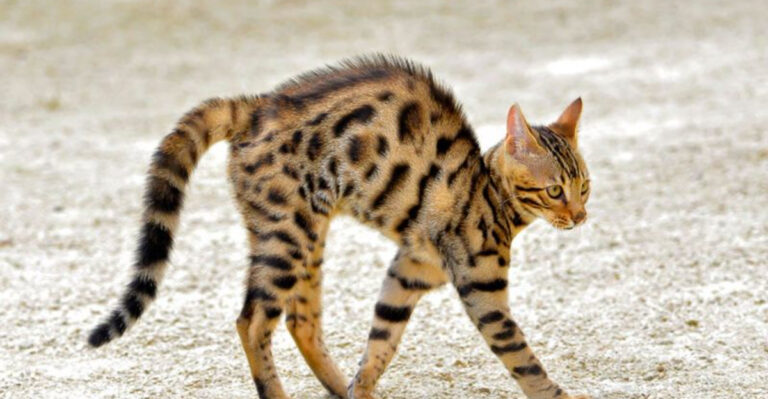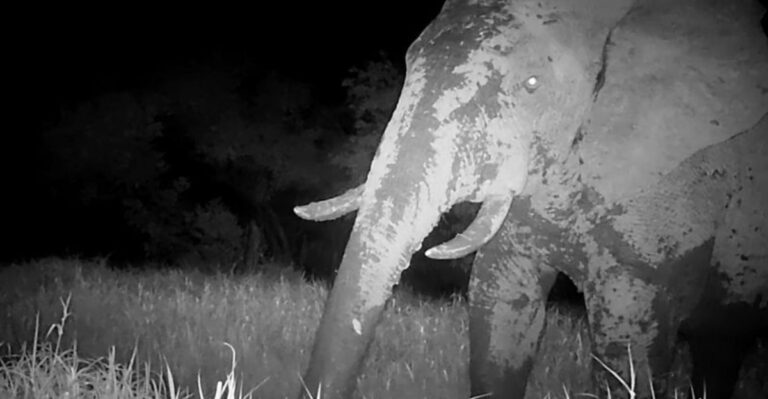Meet The Giant Feathered Dinosaur That Resembled T. Rex
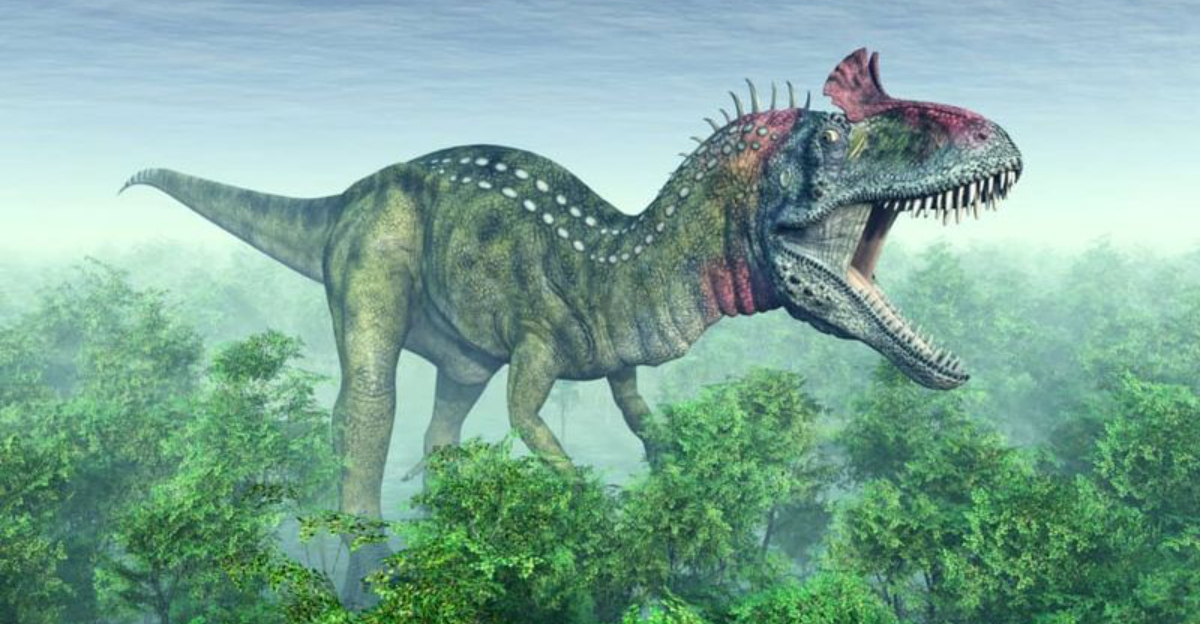
Step back into the Early Jurassic period and meet Cryolophosaurus, a fascinating predator that once roamed Antarctica when it was much warmer.
This 20-foot-long carnivore sported a distinctive crest on its head, earning it the nickname ‘Elvisaurus’ due to its resemblance to Elvis Presley’s pompadour hairstyle.
As one of the earliest large predatory dinosaurs discovered, Cryolophosaurus offers paleontologists unique insights into dinosaur evolution and ancient Antarctic ecosystems.
1. The Cold-Crested Hunter

The name Cryolophosaurus means “frozen crested lizard,” perfectly describing this dinosaur’s most distinctive feature and its discovery location. Found in Antarctica’s Mount Kirkpatrick formation, it’s one of the few dinosaurs ever discovered on this icy continent.
The scientific name combines Greek words: “cryo” meaning cold, “lophos” for crest, and “saurus” for lizard. When paleontologists first uncovered its remains in 1991, they were amazed to find a large predator in what was once thought to be a dinosaur-free continent.
Antarctica wasn’t always covered in ice – during Cryolophosaurus’s time about 190 million years ago, it was much warmer and supported diverse plant and animal life.
2. Elvis’s Prehistoric Namesake
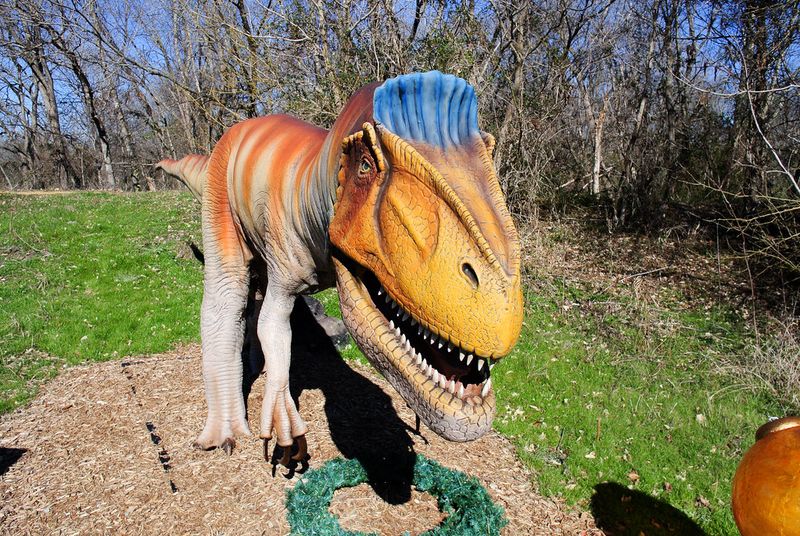
Paleontologists couldn’t help noticing that Cryolophosaurus’s unique head crest resembled Elvis Presley’s famous pompadour hairstyle. This similarity earned it the affectionate nickname “Elvisaurus” among scientists and dinosaur enthusiasts alike.
The crest runs sideways across the top of the skull rather than front-to-back like most crested dinosaurs. This unusual feature makes Cryolophosaurus instantly recognizable among its prehistoric peers.
While the nickname stuck in popular culture, scientists formally named it Cryolophosaurus ellioti after David Elliot, the geologist who first discovered its bones while exploring Antarctica’s Transantarctic Mountains in 1991.
3. Antarctica’s First Dinosaur Predator

Cryolophosaurus holds the distinction of being the first carnivorous dinosaur discovered in Antarctica. Its discovery in 1991 shattered the notion that large predatory dinosaurs didn’t inhabit the southern polar regions.
Standing about 6.5 feet tall at the hip and measuring roughly 20 feet long, this impressive hunter would have been the apex predator in its ecosystem. Scientists estimate it weighed between 1,000 to 1,300 pounds – about the size of a small car!
Finding such a large predator in Antarctica revolutionized our understanding of dinosaur distribution and ancient polar ecosystems, proving these mighty reptiles had adapted to life across all continents.
4. Feathered Like A Giant Bird
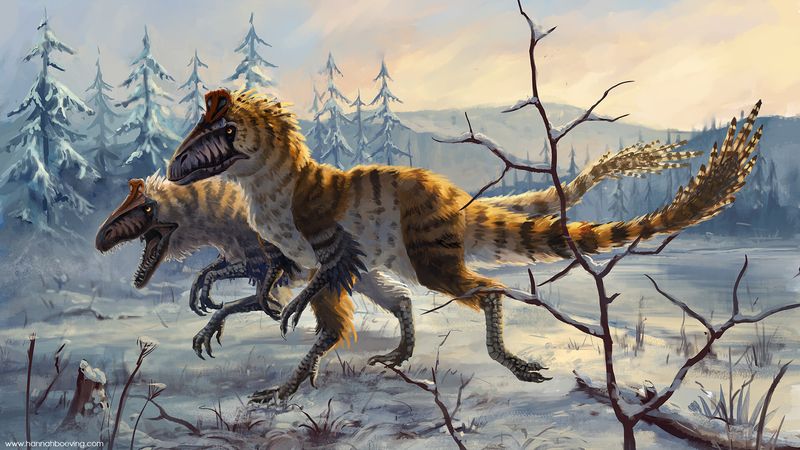
Recent scientific evidence suggests Cryolophosaurus likely had feathers, challenging our traditional image of dinosaurs as purely scaly creatures. As a theropod dinosaur related to the ancestors of modern birds, it probably sported primitive feather-like structures.
These feathers weren’t for flight but may have served as insulation in the cooler Antarctic climate of the Early Jurassic. Picture a giant, toothy predator covered in colorful feathery plumage – quite different from the naked reptiles often portrayed in older dinosaur media!
The discovery of feathered dinosaurs has revolutionized paleontology, creating a new understanding of how birds evolved from theropod dinosaurs like Cryolophosaurus.
5. Jurassic Time Traveler

Cryolophosaurus roamed Earth during the Early Jurassic period, approximately 190-188 million years ago. This makes it one of the oldest known large predatory dinosaurs, appearing much earlier than famous hunters like T. rex, which lived about 68-66 million years ago.
Living in the early days of dinosaur evolution, Cryolophosaurus provides crucial insights into how large predatory dinosaurs developed. Its existence helps fill important gaps in the dinosaur family tree.
The Early Jurassic was a time when dinosaurs were beginning their rise to dominance after the Triassic-Jurassic extinction event. Cryolophosaurus represents an early experiment in large predator design that would later evolve into even more specialized hunters.
6. Built For Speed And Power
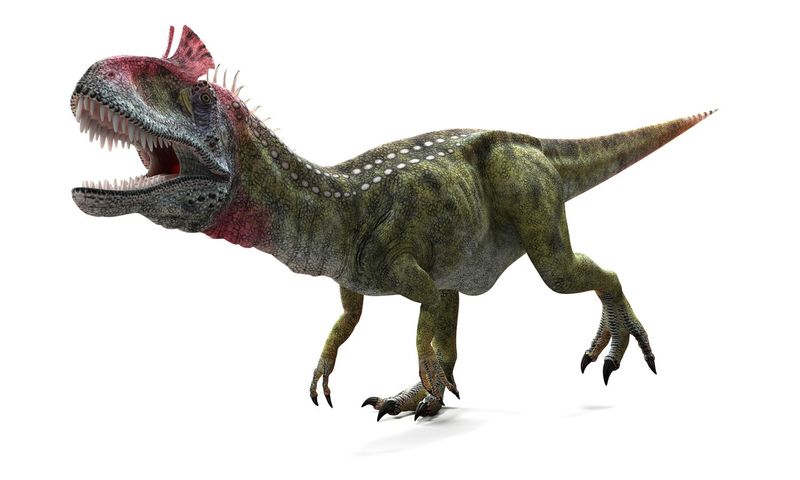
Fossil evidence reveals Cryolophosaurus had strong legs built for pursuing prey across the ancient Antarctic landscape. Unlike the later T. rex with its tiny arms, Cryolophosaurus possessed relatively powerful forelimbs with three-fingered hands equipped with sharp claws.
Its body design suggests it was both fast and strong – a lethal combination for hunting. The dinosaur’s skull housed powerful jaw muscles, and its mouth contained dozens of serrated teeth perfect for slicing through flesh.
Paleontologists believe Cryolophosaurus could reach speeds of 20-25 mph in short bursts – fast enough to chase down many of the plant-eating dinosaurs that shared its habitat.
7. Antarctica’s Ancient Warm Period
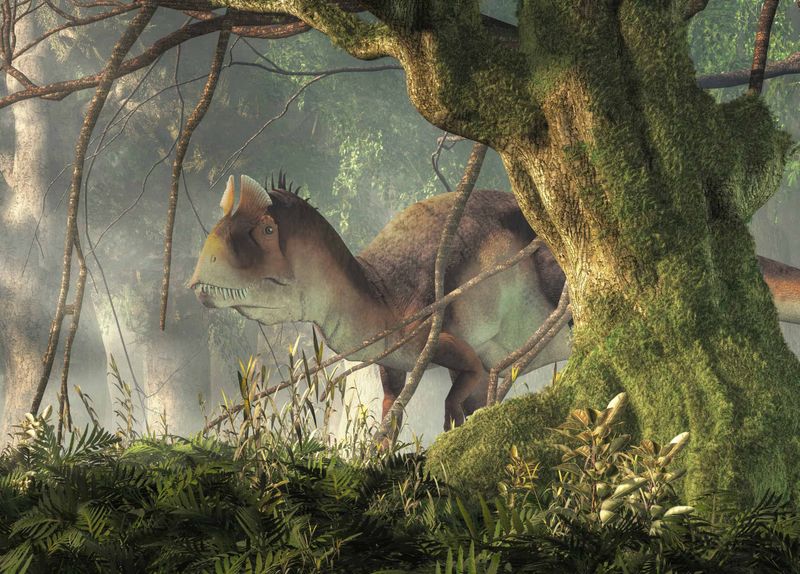
When Cryolophosaurus hunted 190 million years ago, Antarctica was nothing like today’s frozen continent. It was positioned much closer to the equator and enjoyed a temperate climate with seasonal variations – think forests rather than ice sheets!
Fossil plants found alongside Cryolophosaurus remains indicate an environment with conifer forests, ferns, and ginkgo trees. Rivers and lakes dotted the landscape, supporting a diverse ecosystem of plants, dinosaurs, and early mammals.
Though Antarctica experienced months of darkness during winter, the warmer climate allowed life to thrive year-round. This prehistoric paradise provided Cryolophosaurus with plenty of prey and suitable nesting grounds.
8. Crest Mystery: Display Or Defense?

The function of Cryolophosaurus’s distinctive head crest remains one of paleontology’s fascinating mysteries. Many scientists believe it served as a display structure for attracting mates, similar to modern birds’ colorful features.
Male Cryolophosaurus may have used their crests in competitive displays, with more vibrant or larger crests indicating healthier, more desirable mates. Alternatively, the crest might have helped individuals recognize members of their own species from a distance.
Some researchers suggest the crest could have played a role in regulating body temperature or even served as a weapon during combat with rivals. Without living specimens to observe, paleontologists can only make educated guesses based on fossil evidence and comparisons with modern animals.
9. Unexpected Family Tree

Surprisingly, Cryolophosaurus isn’t closely related to T. rex despite some similarities in appearance. It belongs to an earlier branch of theropod dinosaurs called dilophosaurids, making it more closely related to Dilophosaurus (the frilled, venom-spitting dinosaur inaccurately portrayed in Jurassic Park).
This family connection helps explain its distinctive head crest, as several dilophosaurids sported similar ornamental features. Cryolophosaurus represents one of the earliest large predators in this evolutionary lineage.
Its position in the dinosaur family tree makes it extremely valuable for understanding how different theropod groups evolved and diversified throughout the Jurassic period, eventually leading to the evolution of birds.
10. Extreme Fossil Hunting
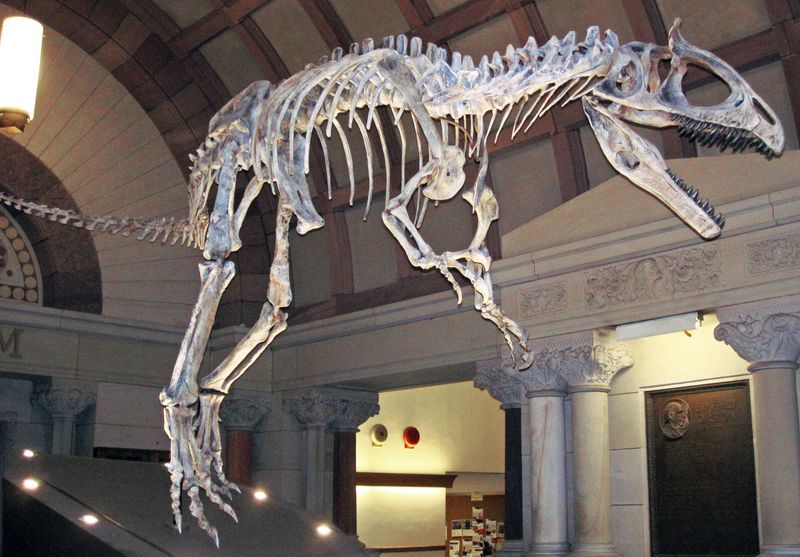
Recovering Cryolophosaurus fossils required one of the most challenging dinosaur excavations ever attempted. The original specimen was discovered at an elevation of 13,000 feet on Mount Kirkpatrick – one of the highest and most remote dinosaur dig sites on Earth.
Paleontologists battled freezing temperatures, thin air, and harsh Antarctic conditions to extract the precious bones. Even during the Antarctic summer, temperatures at the site rarely rise above freezing.
The extreme location has limited further excavations, making Cryolophosaurus one of the rarest dinosaur fossils. Scientists had to use jackhammers and diamond-tipped saws to free the bones from the hard Antarctic rock before carefully transporting them back to civilization for study.
11. Prehistoric Antarctic Ecosystem
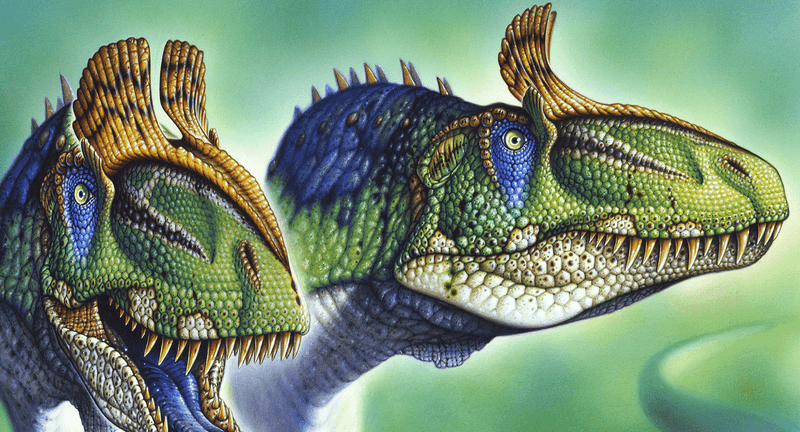
As the top predator in its environment, Cryolophosaurus hunted various prey animals that shared its Antarctic habitat. Fossil evidence suggests it preyed upon early sauropodomorphs – long-necked plant-eaters that were ancestors to later giant sauropods like Brachiosaurus.
The Antarctic ecosystem also included primitive crocodile relatives, early mammals no bigger than shrews, and various fish in its rivers and lakes. Plant life consisted primarily of conifers, ginkgoes, ferns, and cycads that could withstand the seasonal darkness.
This complex food web, with Cryolophosaurus at its apex, thrived in Antarctica’s temperate climate long before the continent drifted southward and became covered in ice.
12. Colorful Crest Theories

If Cryolophosaurus had feathers as scientists now believe, its crest was likely covered in colorful plumage rather than bare skin. Modern birds often display bright colors in their crests and feathers, particularly during mating season.
Male Cryolophosaurus might have sported vibrant red, blue, or yellow feathers on their crests to attract females and intimidate rivals. These colors could have stood out dramatically against their body feathers, which were probably earth-toned for camouflage while hunting.
Scientists study microscopic structures in fossil feathers that can sometimes reveal original colors. Though no such evidence exists yet for Cryolophosaurus, future discoveries might one day reveal this prehistoric predator’s true colors.

